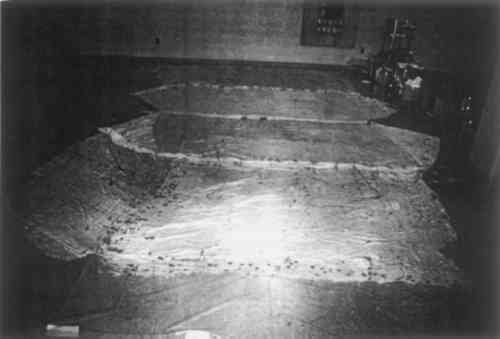THE CONSERVATION OF GEORGE WASHINGTON'S REVOLUTIONARY WAR CAMPAIGN MARQUEESFonda Ghiardi Thomsen, & Louise Cooley
4 CONDITION4.1 Inner Sleeping ChamberThe main fabric was weak and riddled with holes, as shown in Figure 1. Fibers around the perimeter of the holes were colored dark brown. Microscopic examination of these brown fibers revealed a lighter tan color inside the fibers. These dark fibers were more brittle than the lighter fibers of the main fabric. Chemical tests conducted by the Federal Bureau of Investigation Crime Laboratory indicated the brown coloring was not due to an applied substance (such as tar, paint, etc.), fungus, or singeing. A test conducted at the laboratory with iron detection papers4 indicated a high concentration of iron. Some of the holes around the side sections appeared in a regular pattern. We know the chamber sides were attached to the top by a series of iron hooks and eyes. The fabric was rolled and stored for years. There was ample opportunity for ferrous degradation of the fabric to occur from the decomposing hooks and eyes.
4.2 Dining Marquee LiningThere were numerous small rips and tears (less than one inch) throughout the woolen fabric. The fibers were brittle from age. Two large sections of fabric were completely missing. Discoloration of the fabric was most likely due to light damage. |
